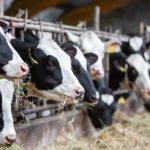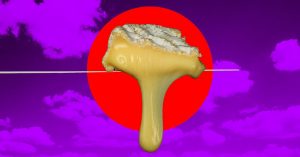
For generations, members of the Shank and Creek families, the owners of Palmyra Farms in Hagerstown, approached dairy farming the same way: they milked the cows and sold the milk to a cooperative that distributed the milk to stores.
These days, Palmyra does a lot more. In addition to milking cows, it makes 11 different types of cheddar cheese — including Chesapeake Bay seasoned cheddar and jalapeno cheddar — and runs an online store that features a variety of cheese-centered gift boxes. Later this spring, Palmyra plans to open Ruth’s Market in Williamsport near the C&O National Park. The market will sell charcuterie trays, fruit, veggies and other items.
“You have to be creative and flexible with the way you handle your operation,” said Mary Creek, a fifth-generation family member and one of the farm’s managers.
When the farm was only selling milk, Creek said there were some months when the farm did not earn enough money from the “milk check” to pay the bills. “So we have to come up with other ways to do it.”
Maryland was once one of the largest dairy-producing states in the country. But the number of dairy farms has fallen sharply over the years, especially in the past three decades. There were 297 dairy farms still in existence as of March, down from 1,400 in 1991, according to the Maryland Departments of Health and Agriculture.
The decline partly reflects changes in the economics of farming that favor the largest farm operators and makes it difficult for smaller family farms to compete. But changing consumer tastes have also played a role. Demand for traditional cow’s milk has fallen as numerous alternatives—which some believe are easier to digest—have risen, including almond, oat and coconut milk.
“Back in the day, everybody drank milk and now they have all these substitutes,” said Sam Tressler, who owned a farm in Frederick County for 48 years. Tressler, 70, recently retired from farming and sold off his dairy cows.
“We’re still trying to get over it,” he said. He and his wife now aim to spend more time with their kids, who moved to other states and had no interest in taking over the farm.
In the future, Tressler envisions a time when the only farms left will be owned by two or three “big guys” who produce most of the output for the area.
But rather than throw in the towel, others are fighting back and are changing the traditional dairy farming business model.
Some dairy farmers are shifting their output to milk with a higher fat content, which can be used to make cheese and butter, products that are growing in demand as some consumers move away from the low-fat diets that were popular in the 1990s.
According to the U.S. Department of Agriculture, cheese consumption averaged 41.7 pounds per capita in 2022, up from 35.6 in 2012; the consumption of butter grew to 6 pounds per capita from 5.5 pounds. Although fluid milk consumption is still far greater, it dropped from 169 pounds per capita in 2012 to 130 pounds in 2022.
Yogurt consumption has also risen sharply. “We’re not putting [milk] on our cereal anymore,” said Jeff Semler, an agriculture researcher at the University of Maryland. “We’re grabbing a yogurt or a GoGurt or whatever, and we’re rushing out the door.”
Changing the mix
Producing milk with higher fat content requires farmers to shift the breed of cows in the herd or alter the feed rations that cows consume to help them produce more fat and other components.
“Increasing component production is a dairyman’s option to remain financially sustainable,” Creek said. “And it is a reflection of market demand for different forms of dairy products.”
Before 2018, Palmyra Farm had around 220 cows consisting of half Ayrshires and half Holsteins. But the farm started selling off many of the Holsteins, not due to the milk content but because they wanted to milk fewer cows. The farm now has about 100 cows – mostly Ayrshires, but some Holsteins and they have since added a few Jerseys to the mix.
Jerseys have the highest milk fat content in their milk, at about 5 percent, compared to around 4 percent for Ayrshires. Holsteins generally produce the least fat, an average of 3.7 percent. Though, for Palmyra the addition of Jerseys was through an agreement with other farmers who asked Palmyra to take care of them. “It was a side benefit,” due to the higher milk components, Creek said.
The shift in dairy herds is slowly taking place nationwide. While Holsteins are still by far the most popular cow, the number of Jerseys in the U.S. has been rising while Holsteins have been dropping. In 2020, Jerseys made up 7.9 percent of U.S. dairy cows, up from 3.8 percent in 2000. During the same period, Holsteins dropped to 79.9 percent from 92.3 percent, according to the National Institutes of Health.
Direct to consumers
In addition to changing milk output, some farmers are opening online and farm-based stores to sell their products directly to consumers, who in recent years have embraced the idea of buying local farm products and supporting smaller businesses.
“If I have the opportunity to easily get something from a local producer, that will be my choice time after time,” said Rebecca Werkmeister, a customer who occasionally shops at local farms.
Wes Miller, the owner of Chesapeake Gold Farms in the town of North East, saw a rise in local consumers buying his dairy products during the COVID-19 pandemic. He initially thought it to be just a “flash in the pan.” But consumers have continued to patronize his store, which first opened in the summer of 2017 and has seen business grow steadily.
“People don’t want just generic food that they don’t know where it came from. They want to see a face … they want to know that it was raised humanely and sustainably and that’s becoming probably almost as important as the quality,” Miller said.
Most farmers do not produce their dairy products on site and instead ship the milk to processors. But a few farmers have decided to invest in the expensive equipment needed to process milk, cheese and other items on site.
One such farm is Deliteful Dairy in Williamsport, which has been around since 1831. The current family owner, Brooks Long, began processing dairy for items including the milk, cheese and ice cream in 2019. Deliteful has a store and sells online, including specialties such as Drunken Crab Cheddar Cheese, which the website describes as cheddar that is “soaked in a local stout beer, pressed into a wheel, then coated in Old Bay and aged for 90 days.”
Being able to bottle and sell the milk quickly and make cheese fresh daily has given Deliteful an edge with customers that has paid dividends, said Long. “Before we started doing it, we were just disheartened by the kind of product that commercial dairy was putting on grocery store shelves,” he said. “It’s over processed, it’s not as nutritional, it doesn’t have as good a taste and flavor. And we just thought we could do better.”
Back to the future
In some ways, focusing on fattier diary is a “back to the future” trend, according to Semler.
Until 1987, most milk had a higher fat content. Then during the 1990s, more Americans moved to reduced-fat and fat-free dairy and other foods on the perception that low fat was healthier.
But in recent years, research has indicated that some fats can be healthy, which has reduced some of the stigma around fat.
Though farming remains a tough business, some of the families that transitioned are pleased with the results.
“At this point, the family enjoys our lifestyle,” Creek said. “We enjoy what we’re doing. We worked really hard with it. We take great pride in it … But, the biggest thing we have to be is open to the ideas of adapting and changing to be able to continue to exist.”
You can now read the most important #news on #eDairyNews #Whatsapp channels!!!
🇺🇸 eDairy News INGLÊS: https://whatsapp.com/channel/0029VaKsjzGDTkJyIN6hcP1K

























